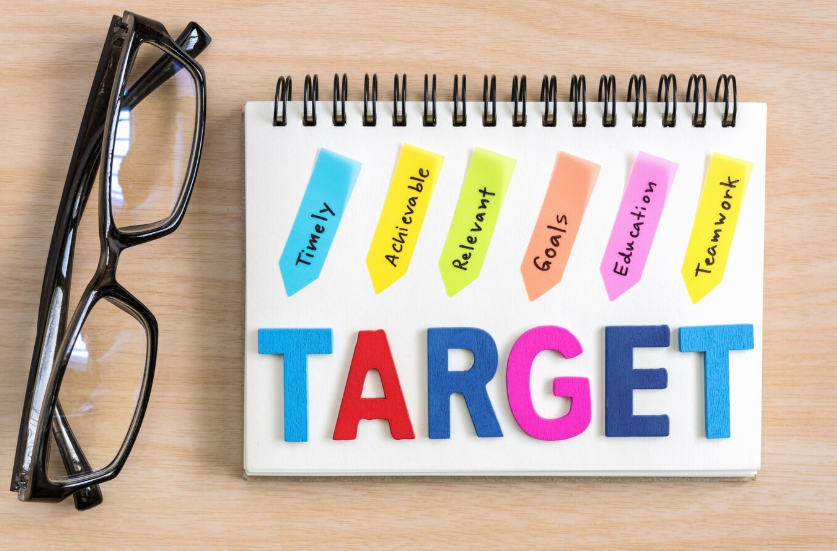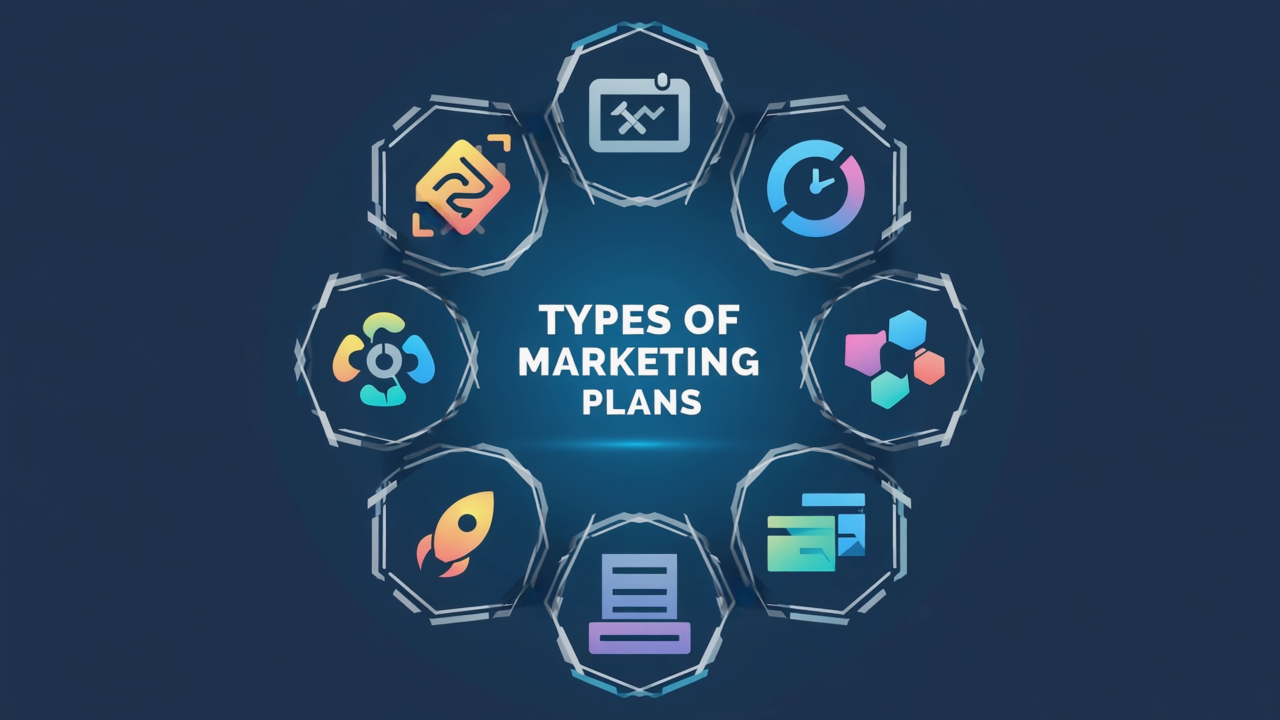A Marketing Plan is the starting point for any business that wants to grow, stay relevant, and reach the right audience. Whether you’re launching a product, entering a new market, or simply trying to stay competitive, a marketing plan gives your efforts structure. It helps you move with purpose, measure progress, and avoid wasting resources on strategies that don’t deliver.
Shall we begin…
What Is a Marketing Plan?
A marketing plan is a strategic document that outlines a company’s marketing goals and the steps needed to achieve them. It covers everything from identifying your target audience to choosing the right marketing channels and determining the budget and timeline.
Think of it as a roadmap that guides all marketing efforts. It provides clarity and focus, ensuring that everyone on the team is aligned and working toward the same objectives.
Marketing plans can vary in length and detail, depending on the size of the business and the nature of the market. Some are short-term plans for a single product launch, while others cover an entire year or more.
Benefits of a Marketing Plan
Creating a solid marketing plan offers more than just direction—it provides a foundation for sustainable growth, better decision-making, and a clear path to achieving business objectives. Below are the key benefits of developing and maintaining a well-structured marketing plan:
1. Clear Focus and Direction
A marketing plan acts as a roadmap, guiding all your promotional efforts toward specific, measurable goals. Instead of random or reactive marketing activities, it gives you a clear vision of what you’re doing, why you’re doing it, and how it contributes to business growth. This clarity allows your team to work with purpose and confidence.
2. Better Resource Allocation
When you have a marketing plan, you can identify the channels, tools, and content that matter most to your audience, saving time and money. It helps you distribute your budget, staff, and time more efficiently across high-impact activities, ensuring your resources are used where they will generate the most return.
3. Improved Team Alignment and Collaboration
Marketing plans bring departments together. Sales, customer service, and product teams can work more cohesively when marketing efforts are aligned with shared business goals. A written plan keeps everyone on the same page and reduces confusion or overlap in responsibilities.
4. Performance Tracking and Accountability
With clear objectives, KPIs, and timelines outlined in your plan, it’s easier to evaluate performance over time. Whether you’re launching a campaign or introducing a new product, a marketing plan allows you to assess what worked and what didn’t. It keeps teams accountable and encourages data-driven adjustments when needed.
5. Stronger Brand Positioning
A consistent, strategic marketing plan ensures your messaging is clear, targeted, and aligned with your brand identity. Over time, this leads to stronger brand recognition, trust, and positioning in your target market.
6. Better Risk Management
Planning reduces the risk of failed campaigns or wasted spending. By mapping out potential scenarios, forecasting market shifts, and anticipating challenges, your team can build contingency strategies, making you more adaptable in fast-changing environments.
7. More Effective Customer Targeting
Knowing your audience is key. A marketing plan requires you to define and understand your target customers, including their behaviors, preferences, and pain points. This knowledge helps create campaigns that speak directly to their needs, leading to higher engagement and conversion rates.
8. Support for Long-Term Business Goals
Marketing isn’t just about short-term wins. A strong plan aligns with your broader business vision—whether that’s scaling into new markets, launching a new product line, or improving customer retention. It ensures your marketing supports long-term growth rather than operating in a silo.
9. Competitive Advantage
Businesses with a proactive marketing plan can respond faster to trends, customer feedback, or competitor moves. This agility gives you a competitive edge in capturing market share and staying ahead of evolving customer expectations.

Marketing Plan vs. Business Plan
While a business plan describes the overall strategy of the company—including operations, finance, management, and long-term goals—a marketing plan zooms in on just the marketing part.
| Aspect | Business Plan | Marketing Plan |
|---|---|---|
| Scope | Entire company | Marketing activities only |
| Audience | Investors, founders, partners | Marketing team, sales, and external vendors |
| Focus | Business model, operations, revenue | Branding, promotion, and lead generation |
| Timeframe | Often long-term (3–5 years) | Short-term (quarterly to annual) |
Both plans are essential, but they serve different purposes. Ideally, the marketing plan supports the goals laid out in the business plan.
Marketing Strategy vs. Marketing Plan
| Aspect | Marketing Strategy | Marketing Plan |
|---|---|---|
| Definition | The “why” behind your marketing efforts | The “how” that brings your strategy to life |
| Focus | Long-term direction and positioning | Short-term campaigns and day-to-day activities |
| Includes | Mission, vision, positioning, value proposition, target segments | Timelines, tactics, budgets, KPIs, and action steps |
| Purpose | Build a sustainable competitive advantage | Execute campaigns efficiently and achieve measurable goals |
| Longevity | Lasts several years | Updated frequently (monthly, quarterly, or annually) |
Types of Marketing Plans
Not all marketing plans are created equal. Depending on your business goals, target audience, and the scope of your strategy, the type of marketing plan you choose will vary. Below are the most common types of marketing plans, along with a detailed explanation of how each one works.
1. Annual Marketing Plan
This is the most traditional format, often created at the start of the fiscal year. It outlines the marketing goals, campaigns, budget, and metrics for the year ahead. Businesses use it to align teams and stay focused on broader objectives across all channels.
An annual plan helps ensure consistent messaging, keeps the team accountable, and offers enough time to track progress, adjust strategies, and measure results over time.
2. Quarterly Marketing Plan
If your business operates in a fast-changing industry or you want to remain flexible, a quarterly marketing plan might be more suitable. These plans allow you to respond more quickly to market trends, competitor activity, and internal performance insights.
Quarterly plans are shorter and more agile than annual plans, focusing on high-priority initiatives and measurable KPIs over 3 months.
3. Product Launch Marketing Plan
A product launch plan is highly specific and focuses solely on promoting a new product or service. It typically includes market research, messaging frameworks, content calendars, promotional strategies, pricing tactics, and channel selection.
The goal here is to create awareness, generate interest, and drive early adoption through a mix of pre-launch teasers, launch campaigns, and post-launch follow-ups.
4. Digital Marketing Plan
This plan outlines your digital strategy across online platforms such as social media, email, SEO, paid ads, and your website. It includes clear performance metrics like website traffic, conversion rates, CTR (click-through rates), and engagement rates.
A digital marketing plan often breaks down specific platform strategies (e.g., Facebook vs. LinkedIn), and it is particularly helpful for businesses that rely heavily on online channels for growth.
5. Content Marketing Plan
This type of plan focuses on how your brand will create, publish, and distribute content to attract and retain a clearly defined audience. It includes blog topics, content formats (e.g., videos, articles, infographics), publishing schedules, distribution tactics, and performance goals. A content marketing plan is ideal for businesses looking to build trust, establish authority, and improve organic visibility.
Article about: How AI is Transforming Content Marketing
6. Social Media Marketing Plan
Social media plans target growth and engagement on platforms like Instagram, X (formerly Twitter), TikTok, LinkedIn, and Facebook. It includes audience research, content themes, posting schedules, engagement tactics, and KPIs such as reach, shares, and follower growth. This plan helps teams streamline content creation, keep up with platform algorithms, and maintain a consistent online presence.
Related article: Social Media Marketing for Small Business in 2025
7. Email Marketing Plan
An email marketing plan outlines the strategies behind newsletters, promotional emails, onboarding sequences, and automation workflows. It includes target segments, messaging strategy, frequency, A/B testing plans, and performance tracking such as open rates and conversion rates.
Email remains one of the most direct and cost-effective channels for nurturing leads and retaining existing customers.
8. Crisis or Reactive Marketing Plan
While not always part of your standard planning, a reactive or crisis plan is essential for responding to unexpected situations, such as PR issues, sudden market shifts, or global events. It focuses on messaging, timing, communication channels, and internal alignment.
Having a backup plan can protect your brand reputation and ensure your team communicates quickly and effectively when challenges arise.

How to Write a Marketing Plan
Writing a marketing plan might seem overwhelming at first, but breaking it into logical steps helps ensure your strategy is both actionable and effective. A solid plan outlines how your business will reach and retain customers, allocate its budget, and evaluate success. Below are the key steps to writing a comprehensive marketing plan:
1. Start with an Executive Summary
This is a brief overview of your marketing goals, strategies, and overall vision. It’s often written last, but it appears first in your plan. The goal here is to give readers a quick snapshot of what the plan covers without going into too much detail.
2. Identify Your Business Goals
Your marketing efforts should align with the broader goals of the company. These goals could include increasing revenue, expanding into new markets, launching a product, improving customer retention, or building brand awareness. Make sure these objectives are SMART (Specific, Measurable, Achievable, Relevant, and Time-bound).
3. Understand Your Audience
Knowing your target audience is the cornerstone of any effective marketing plan. Define your ideal customers by demographic data (age, gender, income), geographic location, interests, behaviors, and pain points. Creating buyer personas—fictional profiles that represent your ideal customers—can help guide your messaging and channel strategy.
4. Conduct Market and Competitor Research
Analyze your market landscape and key competitors. What are they doing well? Where are the gaps? Identify trends, customer needs, and potential threats. This research will help you spot opportunities and position your brand effectively. Don’t just focus on what competitors are doing, but also on what your audience wants that they may not be getting.
5. Define Your Unique Selling Proposition (USP)
Your USP is what makes your brand, product, or service different—and better—for your target audience. This should be clear, concise, and present throughout all your marketing communications. A strong USP makes it easier to build loyalty and differentiate yourself in a crowded market.
6. Outline Your Marketing Strategies and Channels
Once you’ve defined your goals and audience, choose the marketing channels that best align with both. This might include:
- Social media (organic or paid)
- Email marketing
- Content marketing (blogs, videos, podcasts)
- SEO and paid search (Google Ads)
- Offline marketing (events, print ads)
- Partnerships or influencer marketing
Your plan should outline which channels you’ll use, why you’re choosing them, and what you expect from each in terms of reach, engagement, and conversions.
7. Set Your Budget
Every strategy needs financial boundaries. Your budget should account for content creation, ad spend, tools and software, events, freelancers, and staff if applicable. Try to break it down by channel or campaign to keep your projections realistic and easy to monitor.
8. Establish Key Performance Indicators (KPIs)
Define how you will measure success. KPIs help you understand whether your efforts are working or if adjustments are needed. Common KPIs include:
- Website traffic
- Social media engagement
- Conversion rates
- Lead generation
- Customer acquisition cost (CAC)
- Return on marketing investment (ROMI)
Tracking these metrics regularly will help you adjust your strategy and improve outcomes.
9. Develop a Timeline and Execution Plan
Set clear deadlines for each part of your marketing strategy. A calendar can help keep everyone on track and ensure that campaigns launch on time. Include who’s responsible for what, and when deliverables are expected.
10. Review and Adjust
A marketing plan isn’t static. Schedule regular reviews to assess performance against your goals and KPIs. Use this insight to refine your approach, reallocate resources, and continuously improve your results.

Marketing Plan Examples
Here are a few simplified examples to help you visualize how different businesses might structure their plans:
Example 1: Local Coffee Shop
- Objective: Increase foot traffic by 20% in 3 months
- Audience: Young professionals within a 3-mile radius
- Tactics: Instagram ads targeting location, loyalty program, Google My Business optimization, weekly email offers
- Budget: $1,500 per month
- KPIs: Store visits, coupon redemptions, Instagram reach
Example 2: SaaS Startup
- Objective: Gain 500 new users for a free trial in 90 days
- Audience: Small business owners in the US
- Tactics: Content marketing via SEO blog posts, LinkedIn ads, webinar series, email drip campaigns
- Budget: $8,000 for Q3
- KPIs: Trial signups, cost per lead, webinar attendance
Example 3: E-commerce Clothing Brand
- Objective: Increase Q4 revenue by 30%
- Audience: Women aged 18-35
- Tactics: TikTok influencer partnerships, seasonal sales email campaigns, paid Facebook ads
- Budget: $12,000 for Q4
- KPIs: ROAS, sales conversion rate, influencer code usage

Conclusion
A marketing plan helps you stay organized, focused, and clear on what you want to achieve. It’s not just about writing things down; it’s about making sure your efforts lead to results. When you know your goals, your audience, and how you’ll reach them, it becomes much easier to grow your business.
You don’t need to have everything figured out from the start. Your plan can change as your business grows. The important thing is to start with a clear direction and keep learning along the way.







